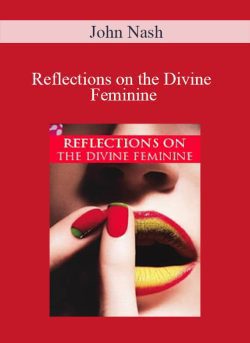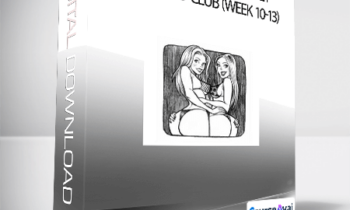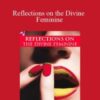$19.00
Digital Download: You will receive a download link via your order email
Save up to 85% compared to Salepage prices. In addition, earn additional points. Save more on your next order.
Please contact email: esygbteam@gmail.com if you have any questions about this course.
 Purchase this course you will earn 19 Points worth of $1.90
Purchase this course you will earn 19 Points worth of $1.90Elevate your skills with the John Nash – Reflections on the Divine Feminine course, available for just $19.00 on Utralist.com! Browse our curated selection of over 60,000 downloadable digital courses across diverse Seduction and Love. Benefit from expert-led, self-paced instruction and save over 80%. Start learning smarter today!
 John Nash – Reflections on the Divine Feminine
John Nash – Reflections on the Divine Feminine
Over the last 30 years feminist theology has become a field of intense interest. The main driving force has been women reacting against the masculine portrayal of God and the patriarchal structure of organ-ized religion. Women are seeking divine images that relate to and support their own spiritual experiences, and they want greater opportunities to express their religious aspirations.
The response to these initiatives has been the incorporation of gender-inclusive language into the liturgy, increasing attention to ancient goddesses and to women in scripture, and the admittance of women–even at senior levels–to some traditionally male-dominated religious institutions.
The process is still in its early stages. Stiff resistance has developed in many quarters–from both men and women–and more education is needed to raise the general consciousness. But it is probably fair to say that a majority of the people in this room support the rights of everyone to express his or her spiritual-ity in meaningful, relevant terms. Whether this is done through organized religion or through new forms of individual and group spirituality is a matter of personal choice.
My purpose today is not to contribute to the political debate over women’s role in religion. Nor do I feel competent to tell women what form of spirituality they should express. Each of us must do that for our-selves. Instead, I want to step back and look at the divine nature, to see what remarks can be made about what has come to be called the feminine face of God. I want to explore what it means to speak of the di-vine feminine and what responses it may evoke within us. We may or may not choose to use the word “goddess” in that context, and there are problems with that term which we shall address later.
However, I do want to emphasize that interest in the divine feminine is not just a women’s issue, an off-shoot of the larger feminist cause. Our gender should not be allowed to dictate the types of spiritual im-ages we find evocative and inspiring. Many women find masculine divine images fulfilling. And many men–throughout history and alive today–are moved by feminine images.
Delivery Method
Cultivate continuous growth with the John Nash – Reflections on the Divine Feminine course at Utralist.com! Unlock lifetime access to premium digital content, meticulously designed for both career advancement and personal enrichment.
- Lifetime Access: Enjoy limitless access to your purchased courses.
- Exceptional Value: Benefit from savings up to 80% on high-quality courses.
- Secure Transactions: Your payments are always safe and protected.
- Practical Application: Gain real-world skills applicable to your goals.
- Instant Accessibility: Begin your learning journey immediately after buying.
- Device Compatible: Access your courses seamlessly on any device.
Transform your potential with Utralist.com!
Related products
Seduction and Love
Kevin Wills – The Desire Protocol – Create Addictive Desire In Any Woman – Art of Femal…
= 9 Points
Seduction and Love
= 14 Points
Seduction and Love
Speed Seduction Total Immersion 2011 Seminar Exclusive Bonuses
= 22 Points
Seduction and Love
2 Girls Teach Sex – The Attraction Secret Advanced Club (week 10-13)
= 25 Points
Seduction and Love
Douglas Hall Interview – DateMasters and Click Magnet Dating
= 16 Points
Seduction and Love
= 68 Points
Seduction and Love
= 43 Points
Seduction and Love
= 11 Points




 John Nash – Reflections on the Divine Feminine
John Nash – Reflections on the Divine Feminine







